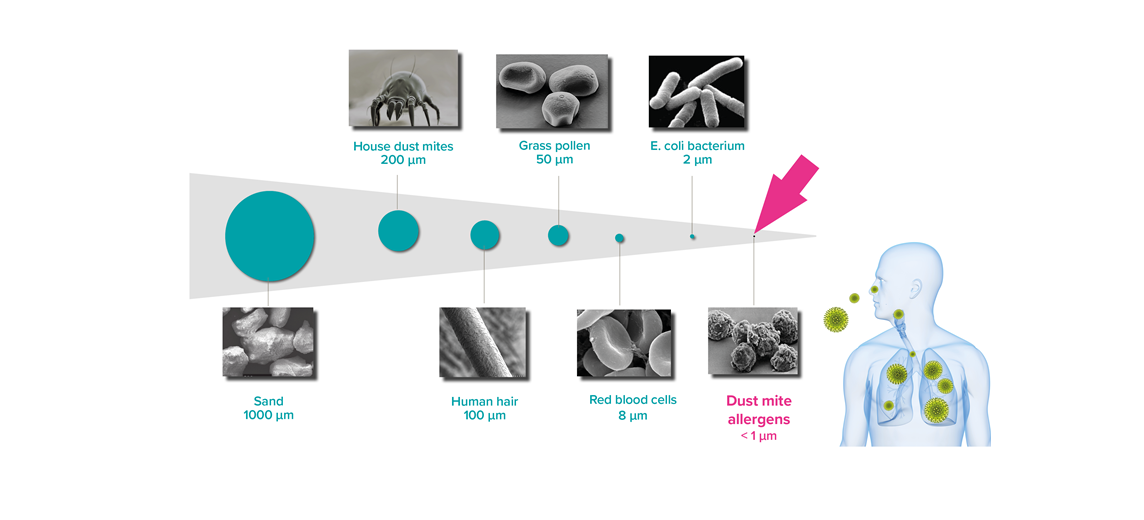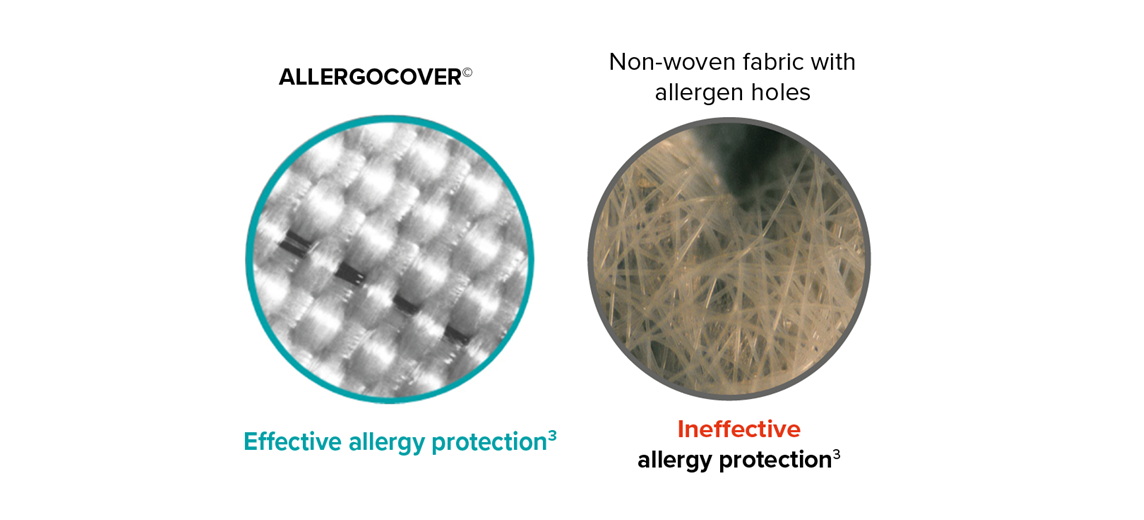

Rely on the clinically tested ALLERGOCOVER® encasing for dust mite asthma
House dust mites are the most common cause of allergic asthma. 80% of all asthmatics are sensitive to dust mite allergies 1. At the same time, asthma attacks are most likely to occur during the night. In addition to the reduced width of the bronchia caused by lying down, asthmatics are exposed to millions of bed mites whose allergens break down into tiny particles. These small particles can be inhaled deep into the lungs, where they trigger inflammatory reactions which can lead to fits of coughing and shortness of breath.

Effectively reduce contact with mite allergens
To reduce the risk of asthma attacks caused by dust mite allergies, asthmatics require effective allergy protection and a safe product, such as that provided by the densely-woven ALLERGOCOVER® encasing with its excellent material characteristics and clinically proven effectiveness. Thanks to its densely woven high-tech microfibre fabric, ALLERGOCOVER© provides an effective allergen barrier, unlike the non-woven fabric that is normally used for encasings. The smooth surface of ALLERGOCOVER © prevents dust mite colonisation and the density of the fabric prevents allergen holes from occurring. Encasings made from non-woven fabric are only scientifically recommended to a limited extent.2

The advantages of ALLERGOCOVER®
1 Kleine-Tebbe A, Jakob T. Molecular Allergy Diagnostics. Innovation for a Better Patient Management. 1 ed: Springer International Publishing; 2017
2 Portnoy J. Miller JD; Williams PB, Chew GL, Zaitoun F, et al. Environmental assessment and exposure patients of Punjab; India. International Journal of Advance Research 2016; 4:115-1161